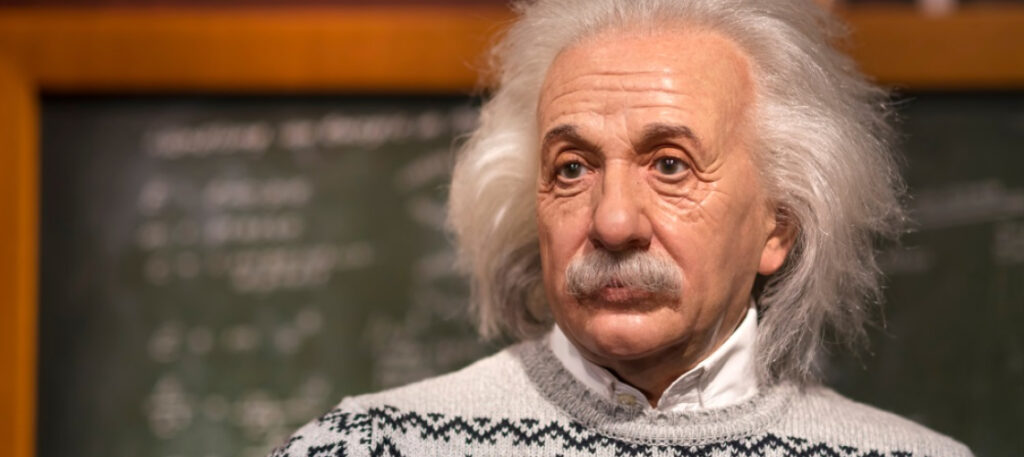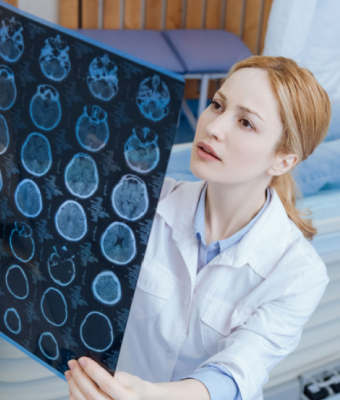Introduction1
Albert Einstein, one of the greatest scientific minds of the 20th century, is often celebrated for his groundbreaking theories of relativity, which reshaped our understanding of the universe. Yet, beyond his scientific contributions, Einstein’s brain has held a captivating allure for scientists and the general public. In this illuminating exploration, we journeyed through the intricate features of Einstein’s brain, shedding light on the mysteries surrounding this mysterious organ and its connection to his genius.
Einstein’s Mysterious Brain: A Journey of Discovery and Controversy1
In 1955, after Einstein’s passing, his brain embarked on a unique scientific journey. Thomas Stoltz Harvey, fueled by curiosity, dissected the 1230-gram brain into numerous pieces, some shared with pathologists. Cytoarchitectonics (study of brain cells under a microscope) promised secrets. Preserved in formalin, meticulously photographed, and encased in collodion, even Einstein’s eyes were examined. Controversy lingers about its preservation, but Hans Albert Einstein (Einstein’s son) endorsed its use for top-tier research. Rediscovered in 1978, it journeyed to Hamilton, Ontario, chronicled by Michael Paterniti. In 2010, Harvey’s heirs entrusted it to the National Museum of Health and Medicine. Now, portions grace the Mütter Museum, inviting contemplation of the genius it once housed.
The Anatomy of Einstein’s Brain

Einstein’s brain, at first glance, appeared to be of conventional size and shape, weighing approximately 1,230 grams – within the typical range for adult human brains. However, upon closer examination, its unique features came to the fore, igniting a fascination that continues today.1
- Absence of Parietal Operculum: In a surprising revelation, Einstein’s brain lacked the parietal operculum, a region linked to tactile stimulus processing. The vacant parietal operculum in Einstein’s brain raises intriguing questions about its role in his cognitive processes.2
- Unconventional Parietal Cortex Groove: Most human brains feature a deep groove that divides the parietal cortex. However, this groove was conspicuously absent in Einstein’s brain, fostering increased connectivity between distant regions. Recent studies suggest that this unique structural trait contributed to Einstein’s exceptional mathematical and spatial cognition.1
- Remarkable Frontal lobes: Einstein’s frontal lobes bore distinctive attributes. Notably, the right hemisphere showcased a significant fold, known as the “sign of omega,” a feature also found in accomplished right-handed violinists. This may shed light on his remarkable talent and musical ability.1
- The Missing Sylvian Fissure: Einstein’s brain lacked the lateral sulcus, commonly known as the Sylvian fissure, a prominent feature that typically separates brain regions. This absence of the Sylvian fissure underscores the uniqueness of his brain’s organization.2
- The Abundance of Glial Cells: Einstein’s brain contained a surplus of glial cells, critical for brain support, nutrition, and signal transmission. This higher proportion of glial cells, particularly in the left inferior parietal area, has sparked speculation about its role in enhancing Einstein’s cognitive capabilities.1
- Asymmetrical Hippocampus: Einstein’s hippocampus, vital for learning and memory, displayed an intriguing asymmetry. Neurons on the left side of his hippocampus were significantly larger than those on the right, suggesting potential implications for his cognitive processes.1
- Enhanced Hemispheric Connectivity: An analysis of Einstein’s corpus callosum, the bundle of fibers connecting the brain’s two hemispheres, revealed extensive connections that surpassed those in control groups. This heightened connectivity facilitated seamless communication between his cerebral hemispheres, enhancing his cognitive abilities.1
The Brain of Other Geniuses
Carl Friedrich Gauss, the renowned mathematician, left behind a brain that piqued scientific curiosity. Examined by Rudolf Wagner a century before Einstein’s brain, it weighed a remarkable 1,492 grams, well above the average. Its highly developed convolutions set Gauss’s brain apart and are believed to underlie his extraordinary mathematical talents. Like Einstein, Gauss’s brain remains a testament to the enduring intrigue surrounding the neural basis of genius, inspiring ongoing scientific inquiry.3
Vladimir Lenin, another renowned scientist, following his death in 1924, underwent plastination, a preservation process. While details of his brain’s anatomy remain private, this unique preservation highlights the enduring fascination with the brains of historical figures and their intersection with science and history.3
Sofya Kovalevskaya, the pioneering mathematician, also left a legacy in the form of her brain. After her death, her brain was preserved and studied. Though specific details about its anatomy aren’t widely known, the preservation of Kovalevskaya’s brain reflects the enduring curiosity surrounding the minds of remarkable individuals and their contributions to the world of science.3
John Edward Howard Rulloff, a notable philologist and criminal in the 19th century, also had his brain preserved and studied after his death. His brain’s anatomy and any specific findings aren’t widely documented. Still, maintaining Rulloff’s brain is a unique historical curiosity, exemplifying the intersection of science and criminal history.4
Conclusion
Examining Albert Einstein’s brain is a fascinating journey in the pursuit of understanding the human mind. Although it may seem ordinary at first glance, a closer look reveals several unique features that continue to intrigue scientists. These include the absence of the parietal operculum, an unconventional groove in the parietal cortex, remarkable frontal lobes, a missing Sylvian fissure, an abundance of glial cells, an asymmetrical hippocampus, and enhanced hemispheric connectivity. All these characteristics highlight the intricate relationship between brain anatomy and cognitive abilities.
Brains of notable figures like Einstein, Carl Friedrich Gauss, Vladimir Lenin, Sofya Kovalevskaya, and John Edward Howard Rulloff represent the intersection of science, history, and the pursuit of understanding the extraordinary abilities of remarkable individuals. Studying these brains offers a glimpse into the complex relationship between neural architecture and human genius. However, the true essence of genius remains a multifaceted enigma that extends far beyond the physical brain. Through studying exceptional brains, we continue to gain fascinating insights into the intricate workings of human intellect.1,2,3,4
References
- Falk D, Lepore FE, & Noe A et al.; The Cerebral Cortex of Albert Einstein: A Description and Preliminary Analysis of Unpublished Photographs. Brain. 2013 Apr;136(Pt 4):1304-27. doi: 10.1093/brain/aws295.
- Falk D. New information about Albert Einstein’s Brain. Frontiers in Evolutionary Neuroscience [Internet]. 2009 [cited 2019 May 6];1. Available from: https://www.ncbi.nlm.nih.gov/pmc/articles/PMC2704009/
- Vein AA, Maat-Schieman MLC. Famous Russian Brains: Historical Attempts to Understand Intelligence. Brain. 2008 Feb 1;131(2):583–90. https://doi.org/10.1093/brain/awm326
- EDWARD H. RULLOFF. American Journal of Psychiatry. 1872 Apr 1;28(4):463–514. https://doi.org/10.1176/ajp.28.4.463



